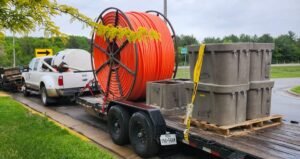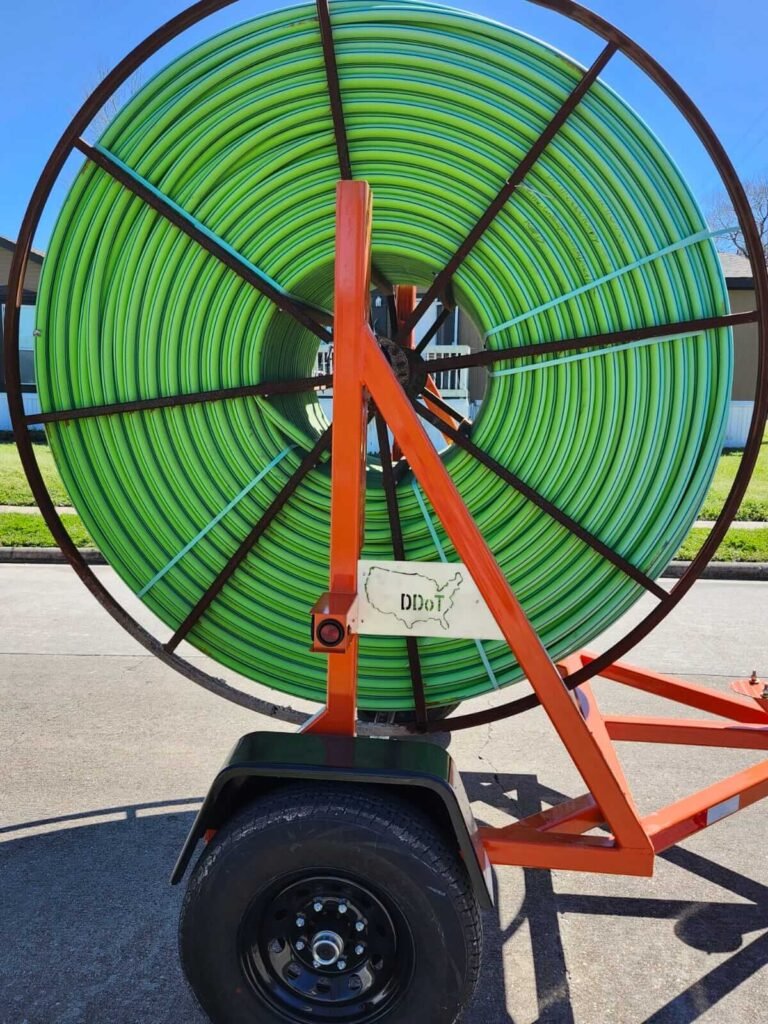 We have mentioned conduit many times, both on our website and in our articles, so we thought it might be appropriate to give some additional information about it.
We have mentioned conduit many times, both on our website and in our articles, so we thought it might be appropriate to give some additional information about it.
Modern designs typically utilize PVC (polyvinyl chloride) or polyethylene. PVC is a common choice due to its affordability, flexibility, and resistance to corrosion. It’s often used in direct burial applications. Polyethylene is known for its durability and resistance to chemicals and impact. High-density polyethylene (HDPE) is particularly favored for demanding applications and is the type we are often involved in installing.
You will have seen photos of the conduit towed behind one of our trucks on large rolls, ready to be pulled through the holes drilled by our rig. In many cases, the conduit is empty and is just a tube ready for cables, fiber optic for internet, coaxial cable for TV, or electrical cables for standard electric installations.
There are, however, variations to this. Ezee Fiber, whom we work for include a Trace Wire inside the conduit. This enables them to easily find the conduit when they are ready to pull or blow the internet fiber cables through. They can track the path of the conduit even though it is completely buried underground and no longer visible. It is not unusual for the drilling to have been completed and the conduit buried some weeks before the cables are ready to be installed.
Comcast is another company that sometimes will provide a conduit with the cables already inside, so that when pulled through, all the cables are in place. This option places an extra degree of specialization on the part of the drilling company, which will need to ensure that the conduit is very carefully pulled back through the drilled hole to ensure no damage is done to the fiber optics or coaxial cable inside.

